When it comes to Italy, most travelers envision picturesque landscapes, rich history, and captivating culture.
But, did you know that the country’s most important rivers play a vital role in shaping its beauty and civilization?
In this article, we’ll explore the most important rivers in Italy, where they begin and end, their significance, fascinating facts, river cruises, major cities along their banks, threats they face, and the measures taken to protect them.
1. The Po River: The Backbone of Northern Italy
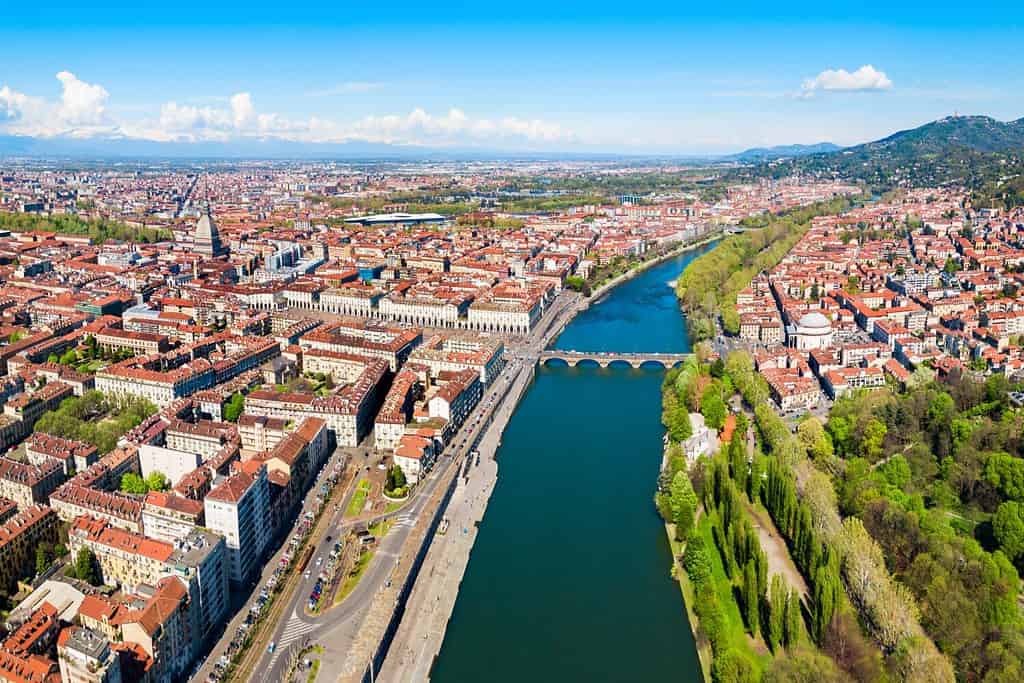
The river provides an important economic role to northern Italy.
©saiko3p/Shutterstock.com
The Po River, Italy’s longest river at approximately 405 miles, starts in the Cottian Alps in the western part of the country. It meanders through picturesque regions, eventually flowing into the Adriatic Sea.
Known as the “backbone of northern Italy,” the Po River is critical to the region’s agriculture, transportation, and energy production.
The Po River basin is Italy’s most fertile area, contributing significantly to the country’s agricultural output. Additionally, it is a major transport route, facilitating trade and industry.
The Po River is not just crucial for Italy’s economy, but it’s also home to various species of fish and birds, making it an ecological gem. The Po River and its delta are a paradise for anglers, with species like catfish and pike.
Turin, Milan, Piacenza, and Venice heavily depend on the Po River for various aspects of their economies.
Travelers can explore the beauty of the Po River on river cruises that take them through charming towns, vineyards, and historic landmarks. Travelers can also take specialized eco-cruises to explore the natural beauty and wildlife along the Po River.
Pollution and flood risks are ongoing concerns. Many towns along the river enforce initiatives for water quality improvement and flood control measures.
Interesting Fact: The Po River was named after the ancient city of Padus, which is now known as Pavia.
2. The Tiber River: Rome’s Lifeline
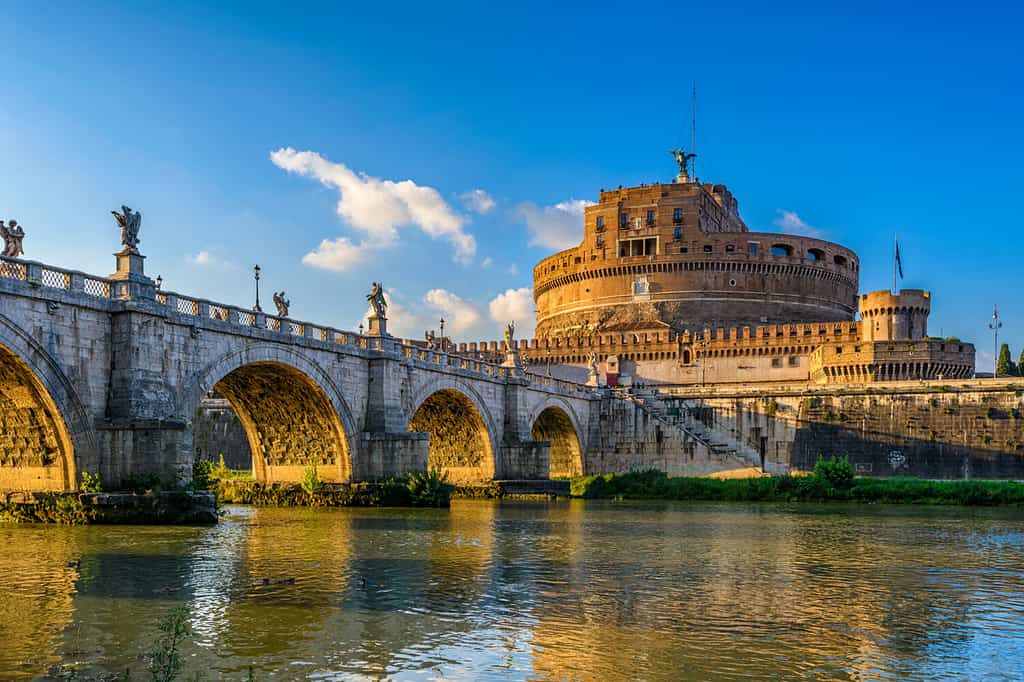
Castle Sant Angelo (Mausoleum of Hadrian), bridge Sant Angelo and river Tiber in Roma, Italy.
©Catarina Belova/Shutterstock.com
The Tiber River is one of Italy’s most iconic rivers. It originates in the Apennines and flows for about 250 miles before reaching the Tyrrhenian Sea.
It holds immense historical and cultural significance as the lifeline of Rome. The Tiber River has played a pivotal role in the development of Rome, providing water and transportation since ancient times.
Rome is the most notable city that heavily relies on the Tiber River.
While not as prominent for cruises, travelers can take boat tours along the Tiber to appreciate Rome’s beauty from a unique perspective.
As with other Italian rivers, pollution and periodic flooding are concerns. Efforts to maintain water quality and manage floods continue.
Interesting Fact: The famous city of Rome was founded on the Tiber’s banks, making it a cradle of Roman civilization.
3. The Adige River: Gateway to the Dolomites
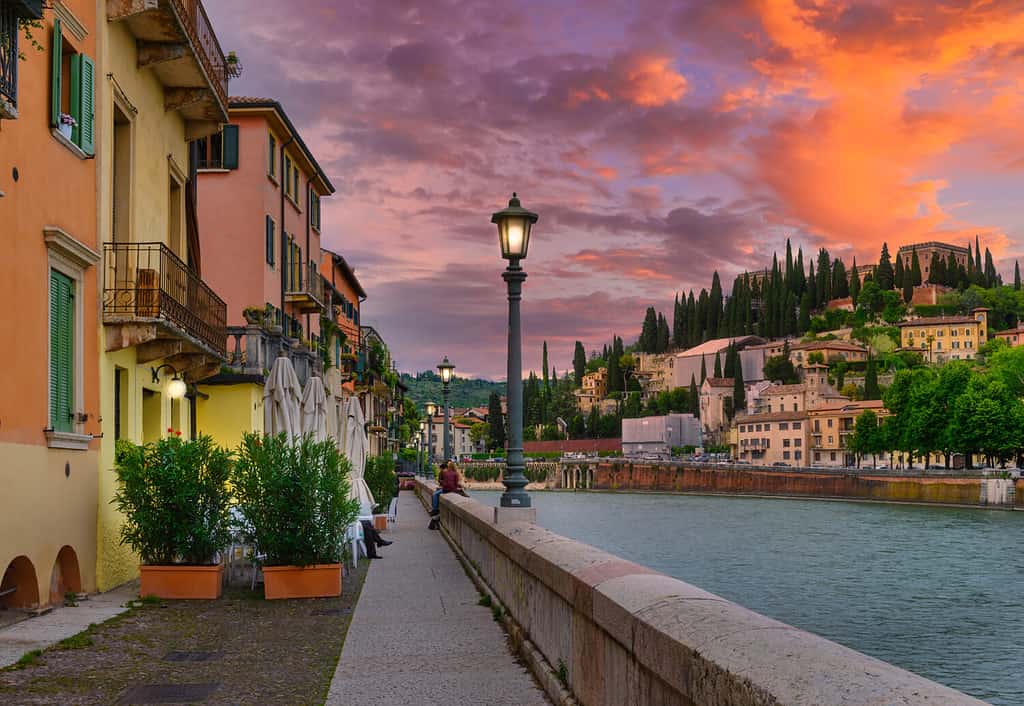
Colorful home and bridges surround the Adige River.
©Catarina Belova/Shutterstock.com
The Adige River, Italy’s second-longest river, begins in the Resia Pass in the Alps and flows for about 251 miles, eventually emptying into the Adriatic Sea. This river is the gateway to the stunning Dolomite Mountains.
The Adige River is crucial for agriculture, as its valley is one of Italy’s most fertile areas. It’s also an essential transport route and energy source.
Trento and Verona depend on the Adige River for their water supply and transportation. Travelers can enjoy river cruises through the breathtaking landscapes of the Adige Valley and the Dolomites.
Water pollution is a concern, but there are efforts to protect the river’s water quality and ecosystems.
Interesting Fact: The Adige River is one of the few European rivers that flows northward.
4. The Arno River: The Heart of Tuscany
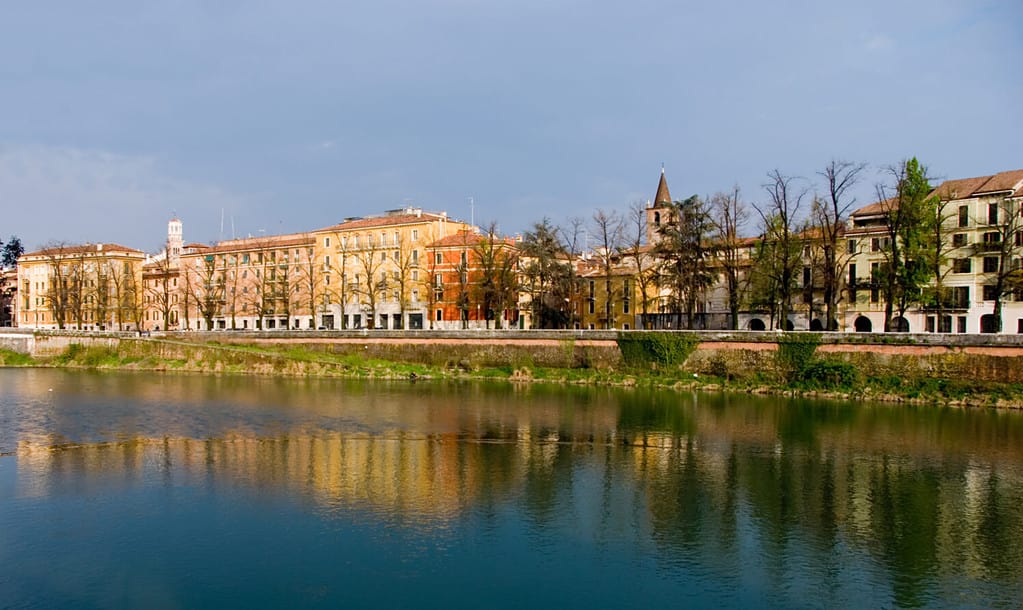
Slicing through the city of Tuscany is the River Arno.
©fauxware/Shutterstock.com
Originating in the Apennines, the Arno River flows for about 150 miles through the picturesque region of Tuscany before reaching the Tyrrhenian Sea. This river is a symbol of culture and beauty in Italy.
The Arno River has been integral to the cultural and artistic development of Tuscany, notably in Florence. It also supports agriculture in the region.
Florence, Pisa, and Empoli greatly depend on the Arno River for their historical, cultural, and economic significance.
Travelers can enjoy boat tours along the Arno, passing through the charming towns of Tuscany.
Pollution is a significant concern. Cities and towns along the river enforce measures to protect the Arno’s water quality and historical sites along the river.
Interesting Fact: Florence, the birthplace of the Renaissance, owes much of its artistic and cultural heritage to the Arno River.
5. The Po Delta: A Unique Ecosystem
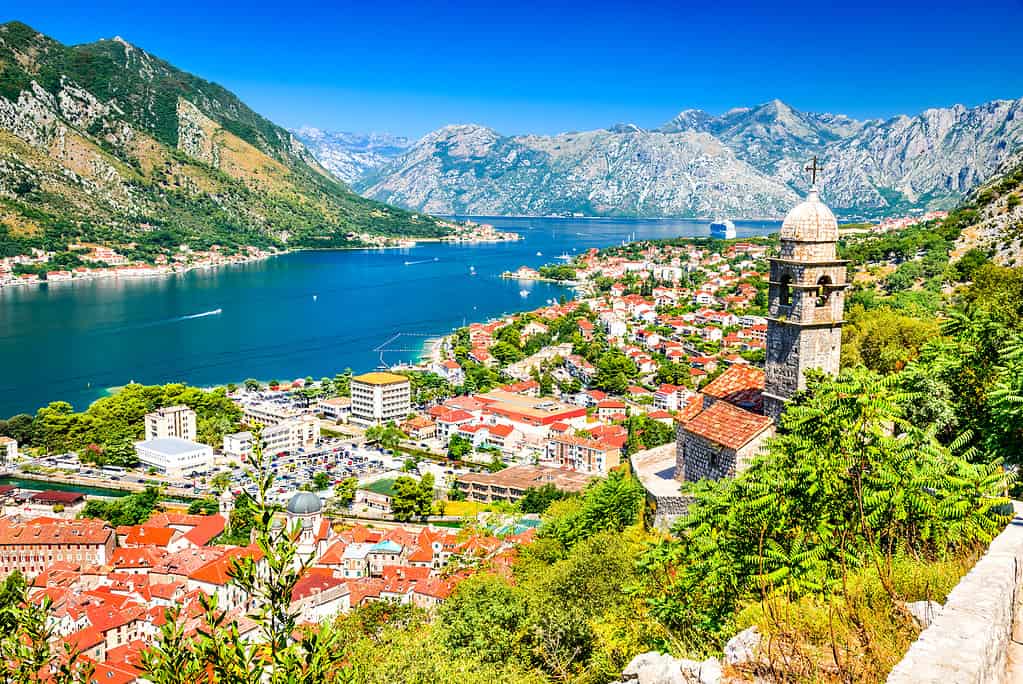
Kotor bay is one of the most beautiful places on Adriatic Sea, boasting the preserved Venetian fortress, old tiny villages, medieval towns and scenic mountains of the area.
©emicristea/iStock via Getty Images
Where the Po River meets the Adriatic Sea, the Po Delta formed. This is not a single river but a network of channels and lagoons that create a unique and fragile ecosystem.
The Po Delta is vital for its biodiversity and as a stopover for migratory birds, making it a designated UNESCO World Heritage Site.
Venice and Ravenna are two of the major cities in the vicinity of the Po Delta, and the ecosystem has an indirect impact on their economies.
Several boat tours allow travelers to explore the enchanting wetlands and wildlife of the Po Delta.
Erosion, land subsidence, and pollution are ongoing challenges. The government focuses efforts on conservation to protect this unique environment.
Interesting Fact: The Po Delta is home to over 360 species of birds, making it a birdwatcher’s paradise.
6. The Brenta River: The Venetian Riviera
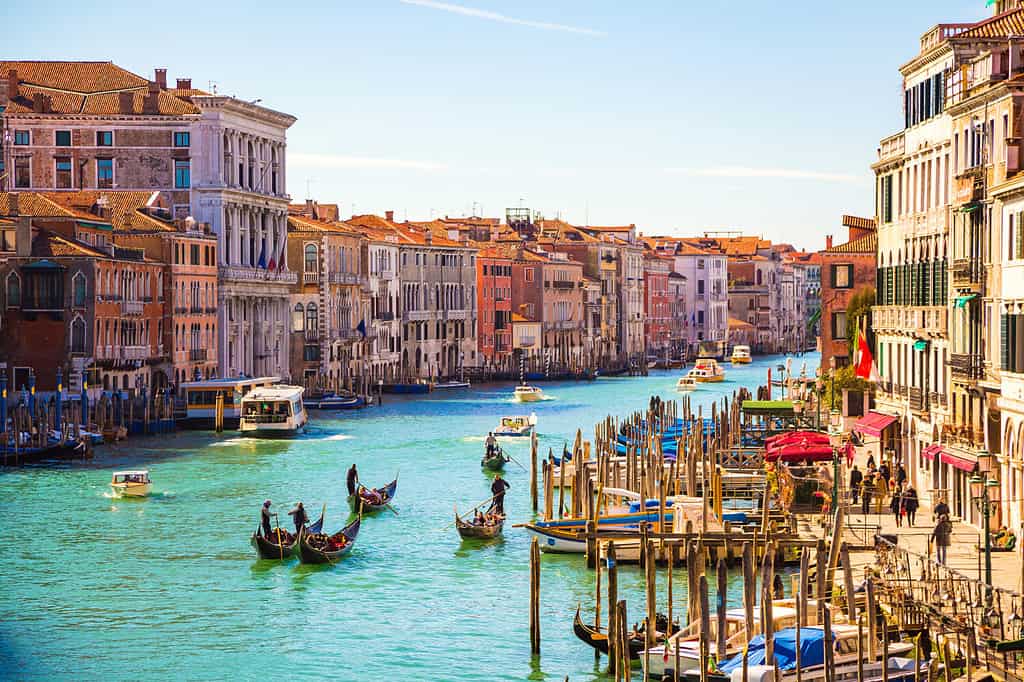
Gondolas provide convenient transportation throughout Venice.
©RAW-films/Shutterstock.com
Originating in the Alps, the Brenta River flows for about 90 miles, reaching the Adriatic Sea near Venice. This lesser-known river has historical significance and contributes to the beauty of the Venetian Riviera.
The Brenta River was historically a vital trade route between Venice and the mainland, and it has contributed to the development of the Venetian region.
Venice, Stra, and Dolo are some of the cities near the Brenta River. Travelers can take boat trips along the Brenta River to explore the charming towns and Venetian villas.
The cities along the river focus on pollution and erosion concerns to maintain water quality and preserve the environment.
Interesting Fact: The Brenta Canal, an artificial waterway connecting the Brenta River to Venice, is renowned for its elegant Venetian villas.
7. The Brenta Canal: Venice’s Grand Boulevard
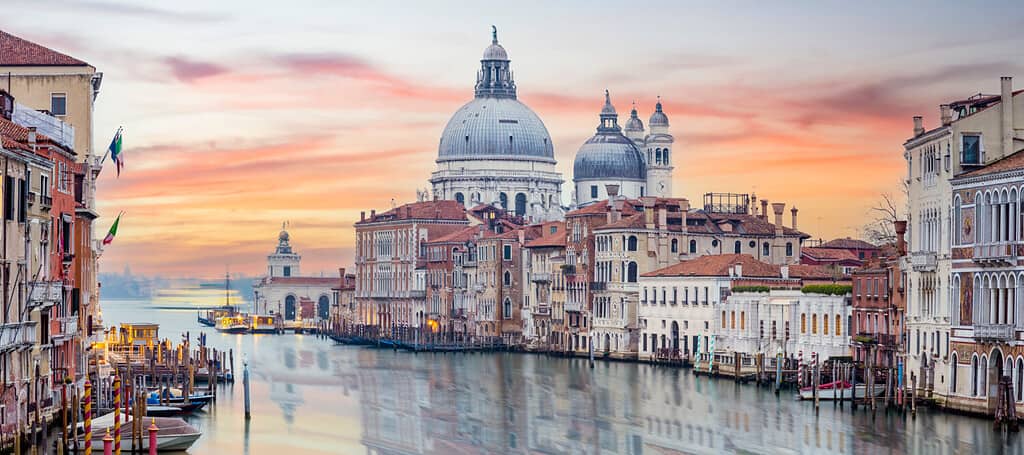
Stunning view of the Venice skyline with the Grand Canal and Basilica Santa Maria Della Salute in the distance during a dramatic sunrise from the Brenta Canal.
©travelwild/Shutterstock.com
While not a river in the traditional sense, the Brenta Canal is an artificial waterway that connects the Brenta River to the city of Venice.
The Brenta Canal was historically a prestigious route for Venetian nobility to reach their villas, and today it provides a unique and picturesque passage to Venice.
Venice is the primary city associated with the canal, as it connects the city with the mainland.
Cruises along the Brenta Canal offer a glimpse into the opulent history of Venice and its aristocracy.
Maintenance and preservation efforts aim to protect the historical and architectural treasures along the Brenta Canal.
Interesting Fact: The canal is lined with stunning Venetian villas, making it a haven for architecture and history enthusiasts.
8. The Serchio River: Tuscany’s Hidden Gem
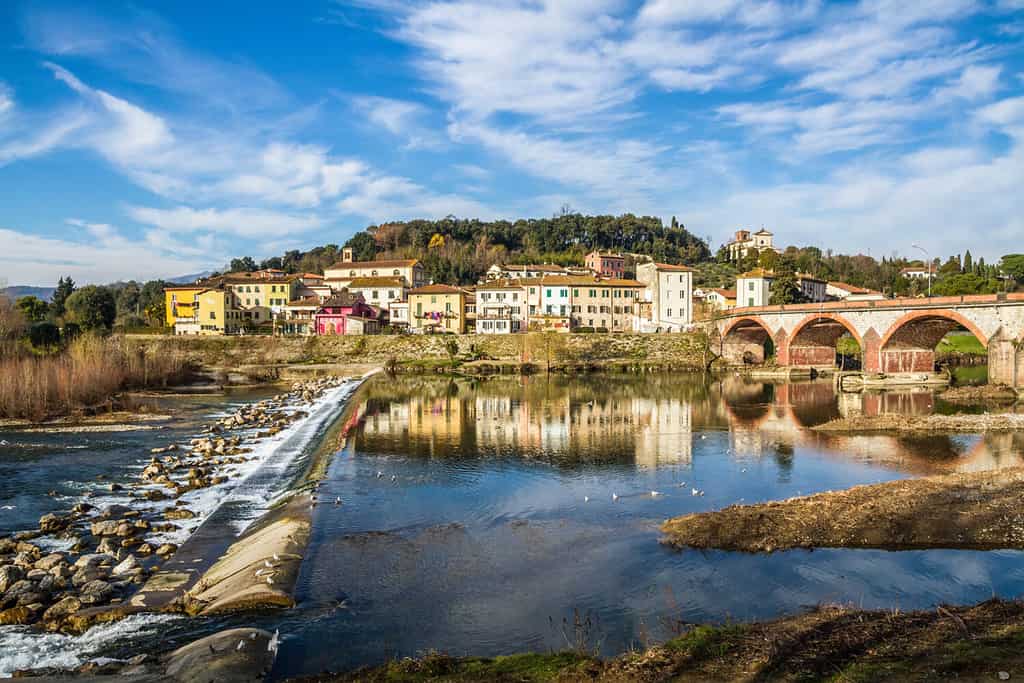
The panoramic view of the village of Monte San Quirico and the Serchio RIver.
©Nina Zorina/Shutterstock.com
Originating in the Tuscan-Emilian Apennines, the Serchio River flows for about 79 miles, eventually joining the Tyrrhenian Sea. This serene river is often overlooked but holds historical and environmental significance.
The Serchio River is known for its unspoiled beauty and tranquility, contributing to the charm of the surrounding landscape.
Lucca is the major city closest to the Serchio River, benefiting from the river’s influence.
Interesting Fact: The Serchio Valley is known for its historical villages, castles, and lush vineyards.
9. The Reno River: The Emilia-Romagna Waterway

Verbascum thapsus growing in the Tuscan-Emilian Apennines.
©Cenz07/Shutterstock.com
Originating in the Tuscan-Emilian Apennines, the Reno River flows for about 77 miles, reaching the Adriatic Sea. It’s a lesser-known river but still holds importance in the region of Emilia-Romagna.
The Reno River contributes to the agricultural production and transportation network of Emilia-Romagna.
Bologna, Ferrara, and Ravenna are some of the cities that benefit from the Reno River’s influence.
While not as common, river cruises along the Reno offer a unique perspective of the Emilia-Romagna area.
Interesting Fact: The Reno River is known for its historical significance and its role in shaping the landscape of the region.
10. The Volturno River: A Campanian Gem
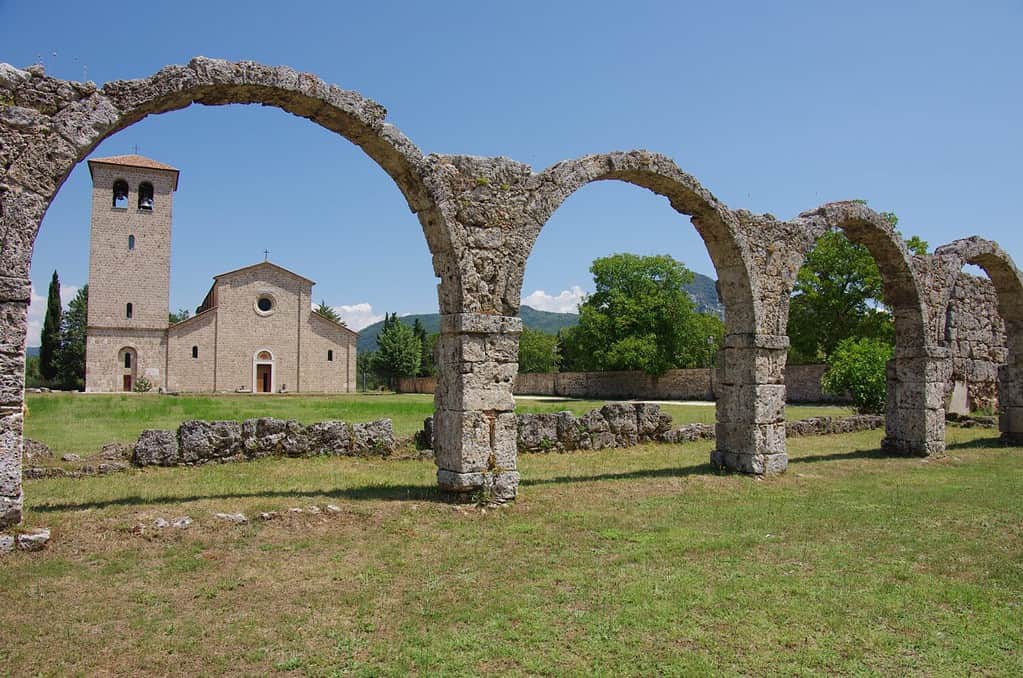
Ancient remains of the “Portico del Pellegrino” and the abbey of San Vincenzo al Volturno along the Volturno River.
©Enrico Spetrino/Shutterstock.com
The Volturno River, originating in the central Apennines, flows for approximately 105 miles before reaching the Tyrrhenian Sea. This river holds cultural and historical significance in the Campania region.
The Volturno River supports agriculture and industry in Campania, contributing to the region’s economy. Caserta and Capua are among the cities that depend on the river for various purposes.
While not a popular area for river cruising, travelers can explore the picturesque landscapes along the Volturno River by small, private boats.
Interesting Fact: The Volturno River was mentioned in ancient Roman texts, highlighting its historical importance.
11. The Garigliano River: The Campanian-Born Waterway

Relaxing along the Garigliano River.
©Massimo Buonaiuto/Shutterstock.com
The Garigliano River, originating in the central Apennines, flows for about 68 miles before reaching the Tyrrhenian Sea. It is another lesser-known but significant river in Campania.
The Garigliano River is essential for agriculture, and its valley has historical significance. Formia and Minturno are among the cities that rely on the river for their economy and history.
Interesting Fact: The river played a role in various historical conflicts and is often associated with ancient Roman battles.
Exploring the Most Important Rivers in Italy
Italy’s most important rivers not only serve as vital lifelines for the country but also offer travelers a unique opportunity to explore its beauty, history, and culture.
From the fertile plains of the Po River to the artistic splendor along the Arno, each river has its charm and significance.
River Cruises: A Memorable Experience
For travelers seeking a distinctive way to explore Italy’s rivers, river cruises are an excellent option.
These cruises offer a relaxed and picturesque journey through charming towns, cultural landmarks, and breathtaking landscapes. Whether it’s the serene Serchio or the bustling Po, there’s a cruise for every traveler’s taste.
Major Cities Along the Banks: Economic and Cultural Hubs
Italy’s major cities that line these rivers heavily depend on them for various aspects of their economy, history, and culture.
The rivers have shaped these cities, contributing to their prosperity and distinct character.
Challenges and Conservation: Protecting Italy’s Waterways
Despite their significance, Italy’s rivers face various challenges, including pollution, flooding, and habitat destruction.
However, efforts are continually made to protect these vital waterways and preserve their ecosystems and historical treasures.
Italy’s most important rivers are not just waterways but integral parts of the country’s identity. They contribute to its economy, culture, and environment, making them essential and cherished elements of the Italian landscape.
Exploring these rivers is not only a journey through beauty but also a dive into history and tradition.
So, the next time you plan a trip to Italy, don’t forget to include these rivers in your itinerary, and maybe even hop on a river cruise to experience the country from a different perspective.
The photo featured at the top of this post is © ESB Professional/Shutterstock.com
Thank you for reading! Have some feedback for us? Contact the AZ Animals editorial team.







